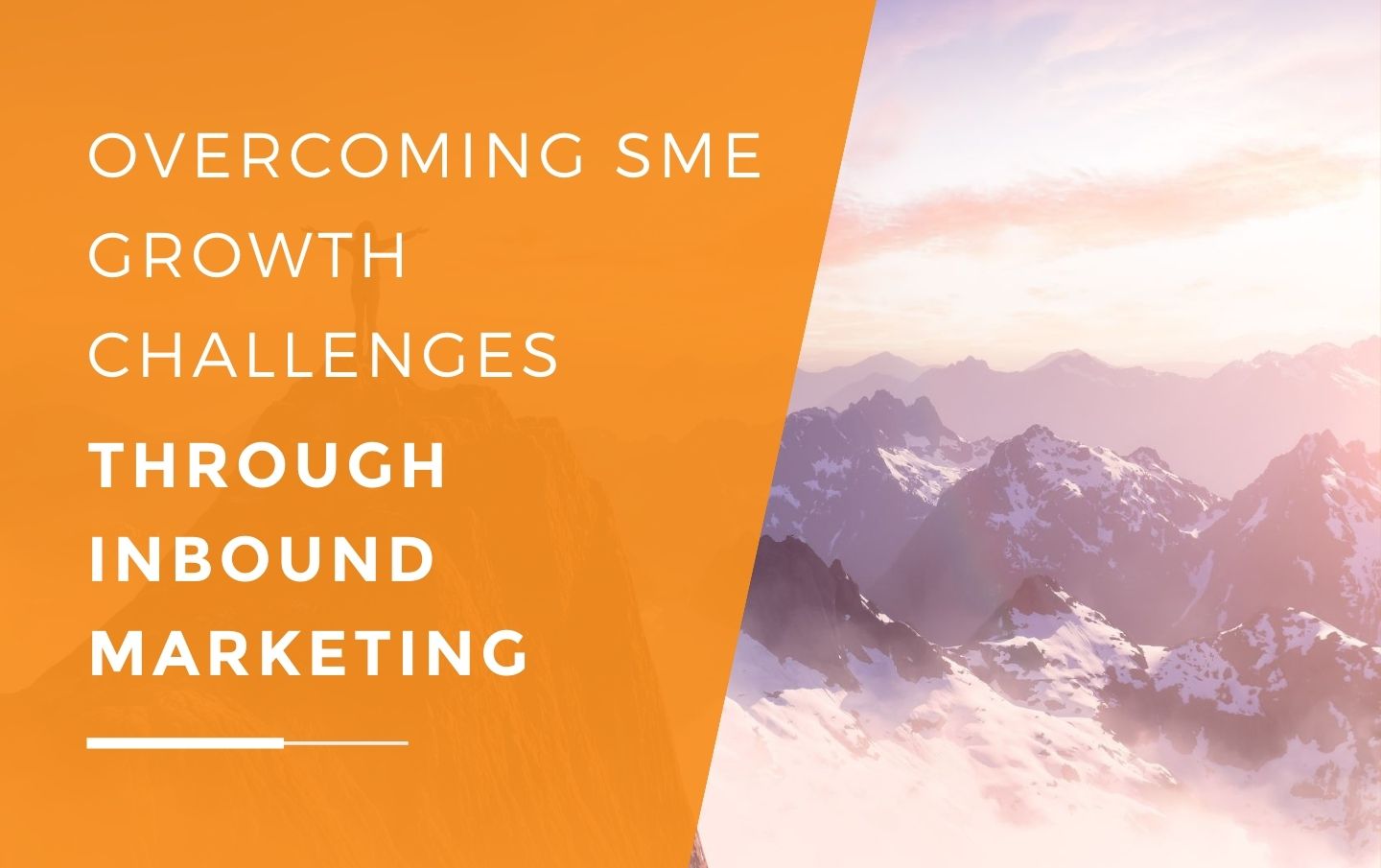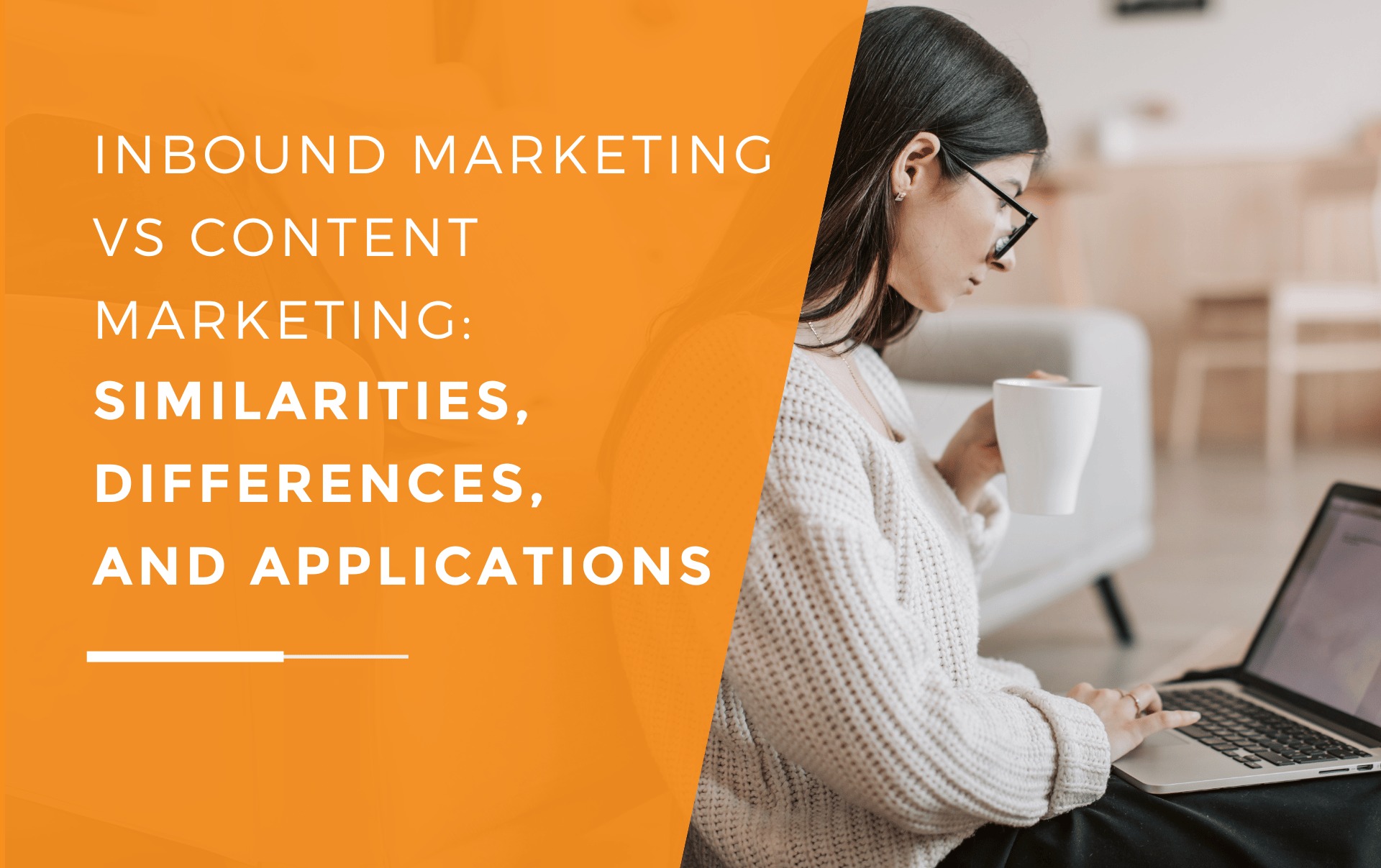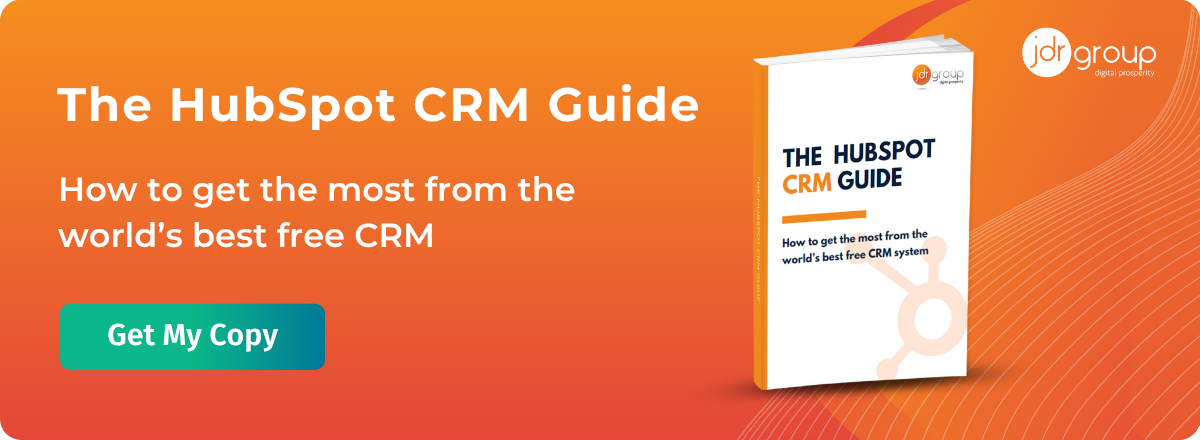Inbound Marketing Vs PR: What’s Better For Your Long-Term Marketing Goals?
by Shirley Gibbins on 25-May-2023 11:45:00

Inbound marketing and public relations (PR) are two marketing strategies employed by businesses to connect with their target audience and achieve their marketing objectives. In this article, we will explore the differences between Inbound Marketing and PR, and what would be the best approach for your long-term marketing strategy.
Inbound Marketing - A Customer-Centric Approach
Inbound marketing places the customer at the centre of its strategy. By creating valuable and relevant content, businesses attract potential customers organically, addressing their pain points and providing solutions throughout their buyer's journey. Unlike PR, which focuses on shaping public perception, inbound marketing establishes a genuine connection with the audience by delivering personalised and helpful information to answer searchers’ queries exactly, showing your company as a reliable source of information in your industry and someone they can trust for honest answers.
PR - An Outbound Approach
PR, or public relations, is a strategic communication practice that focuses on managing the relationship between an organisation and its already established audience. In outbound marketing, PR takes a proactive approach by disseminating information to the public through various channels, such as media outlets, press releases, events, and influencer partnerships. The goal is to shape public perception, generate positive publicity, and enhance brand reputation. By reaching out to your audience directly, PR aims to create awareness of what is going on in your company currently and establish credibility for the brand for those in your database who already know you and your position in your industry.
Measurable Results And ROI
One of the key advantages of inbound marketing is its ability to deliver measurable results. By leveraging various digital marketing tools and analytics, businesses can track website traffic, lead generation, conversion rates, and customer acquisition costs. This data-driven approach allows companies to optimise their marketing efforts, improve their return on investment (ROI), and make informed decisions based on concrete metrics. In contrast, PR often struggles to provide quantifiable results as its focus on short-term and topical subjects usually only makes the content relevant for topics happening while they are relevant, making it challenging to assess its impact in the long run.
Targeted And Relevant Audience Engagement
Inbound marketing's strength lies in its ability to reach a targeted audience that aligns with the brand's ideal customer by creating evergreen content that will stay relevant to the public for a long duration of time. By understanding your audience's needs and preferences, your business can tailor its content and marketing messages accordingly by answering the questions that people need from your industry. This personalised approach fosters stronger connections, builds trust, and increases the likelihood of conversion. PR, on the other hand, often focuses on reaching an already established audience that is primarily at the bottom of the funnel already or who is in the know of your brand, making it less effective in reaching that wider audience that does not know who you are, therefore limiting your reach to those potential leads and customers.
Cost-Effectiveness And Long-Term Value
Compared to traditional PR methods, inbound marketing offers a more cost-effective solution for businesses. By utilising digital channels such as content marketing, SEO, social media, and email marketing, companies can reduce expenses associated with traditional PR campaigns, such as media buying and event sponsorships. Moreover, inbound marketing assets, such as blog posts, videos, and eBooks, have a lasting impact and continue to attract leads and drive traffic long after their initial creation. This sustained value makes inbound marketing a worthwhile investment in the long run.
Two-Way Communication And Brand Loyalty
Inbound marketing facilitates two-way communication between businesses and their audience. Through social media interactions, blog comments, and direct messaging, customers can actively engage with the brand, providing feedback, asking questions, and sharing their experiences. This open dialogue strengthens relationships, fosters brand loyalty, and creates brand advocates who promote the business organically. PR, with its more controlled and one-way communication approach, often misses out on this opportunity to build genuine connections and establish loyal customer relationships.
What’s Better For A Long-Term Strategy?
When it comes to a long-term marketing strategy, inbound marketing takes the lead over PR. While PR focuses on shaping public perception and generating short-term publicity, inbound marketing builds sustainable relationships with customers. By creating valuable content, addressing specific pain points, and nurturing leads throughout their buyer's journey, inbound marketing attracts and engages a targeted audience. Its data-driven approach, measurable results, and emphasis on customer-centricity make inbound marketing the ideal choice for long-term growth and ROI.
Next Steps
For more information about Inbound Marketing and how you can use it for your business to capture new customers and leads, please get in touch with JDR Group’s Inbound Marketing Specialists today.
Image Source: Canva
- Inbound Marketing (SEO, PPC, Social Media, Video) (827)
- Strategy (366)
- Sales & CRM (195)
- Marketing Automation & Email Marketing (190)
- Business Growth (165)
- Website Design (160)
- Hubspot (138)
- Lead Generation (116)
- Google Adwords (99)
- Content Marketing (94)
- Conversion (51)
- Case Studies (47)
- News (47)
- Ecommerce (39)
- Webinars (34)
- SEO (25)
- AI (20)
- Events (19)
- LinkedIn Advertising (17)
- Video (17)
- Video Selling (15)
- Software training (13)
- Niche business marketing (11)
- The Digital Prosperity Podcast (10)
- Facebook Advertising (6)
- HubSpot Case Studies (5)
- January 2026 (1)
- December 2025 (15)
- November 2025 (6)
- October 2025 (17)
- September 2025 (16)
- August 2025 (14)
- July 2025 (14)
- June 2025 (5)
- May 2025 (19)
- April 2025 (15)
- March 2025 (13)
- February 2025 (13)
- January 2025 (8)
- December 2024 (2)
- November 2024 (4)
- October 2024 (21)
- September 2024 (4)
- August 2024 (8)
- July 2024 (14)
- June 2024 (16)
- May 2024 (25)
- April 2024 (15)
- March 2024 (18)
- February 2024 (5)
- January 2024 (10)
- December 2023 (6)
- November 2023 (10)
- October 2023 (13)
- September 2023 (12)
- August 2023 (14)
- July 2023 (13)
- June 2023 (14)
- May 2023 (15)
- April 2023 (13)
- March 2023 (14)
- February 2023 (13)
- January 2023 (15)
- December 2022 (13)
- November 2022 (6)
- October 2022 (8)
- September 2022 (22)
- August 2022 (15)
- July 2022 (13)
- June 2022 (16)
- May 2022 (14)
- April 2022 (16)
- March 2022 (17)
- February 2022 (11)
- January 2022 (8)
- December 2021 (6)
- November 2021 (7)
- October 2021 (11)
- September 2021 (10)
- August 2021 (7)
- July 2021 (7)
- June 2021 (4)
- May 2021 (4)
- April 2021 (1)
- March 2021 (3)
- February 2021 (5)
- January 2021 (4)
- December 2020 (7)
- November 2020 (6)
- October 2020 (5)
- September 2020 (9)
- August 2020 (18)
- July 2020 (17)
- June 2020 (17)
- May 2020 (10)
- April 2020 (21)
- March 2020 (24)
- February 2020 (21)
- January 2020 (12)
- December 2019 (23)
- November 2019 (12)
- October 2019 (14)
- September 2019 (16)
- August 2019 (15)
- July 2019 (13)
- June 2019 (6)
- May 2019 (8)
- April 2019 (4)
- March 2019 (2)
- February 2019 (2)
- January 2019 (2)
- December 2018 (3)
- November 2018 (24)
- September 2018 (11)
- August 2018 (9)
- June 2018 (3)
- May 2018 (6)
- April 2018 (14)
- March 2018 (12)
- February 2018 (16)
- January 2018 (15)
- December 2017 (15)
- November 2017 (18)
- October 2017 (23)
- September 2017 (19)
- August 2017 (28)
- July 2017 (27)
- June 2017 (25)
- May 2017 (18)
- April 2017 (17)
- March 2017 (16)
- February 2017 (17)
- January 2017 (14)
- December 2016 (21)
- November 2016 (27)
- October 2016 (25)
- September 2016 (16)
- August 2016 (20)
- July 2016 (19)
- June 2016 (14)
- May 2016 (20)
- April 2016 (24)
- March 2016 (22)
- February 2016 (28)
- January 2016 (27)
- December 2015 (28)
- November 2015 (19)
- October 2015 (9)
- September 2015 (12)
- August 2015 (5)
- July 2015 (1)
- June 2015 (10)
- May 2015 (3)
- April 2015 (11)
- March 2015 (14)
- February 2015 (15)
- January 2015 (12)
- December 2014 (2)
- November 2014 (23)
- October 2014 (2)
- September 2014 (2)
- August 2014 (2)
- July 2014 (2)
- June 2014 (7)
- May 2014 (14)
- April 2014 (14)
- March 2014 (7)
- February 2014 (2)
- January 2014 (7)
- December 2013 (9)
- November 2013 (14)
- October 2013 (17)
- September 2013 (3)
- August 2013 (6)
- July 2013 (8)
- June 2013 (4)
- May 2013 (3)
- April 2013 (6)
- March 2013 (6)
- February 2013 (7)
- January 2013 (5)
- December 2012 (3)
- November 2012 (2)
- September 2012 (1)
Subscribe by email
You May Also Like
These Related Blogs

Unlocking Business Growth: The Inbound Marketing Advantage
Tapping into the power of inbound marketing can give SMEs a crucial growth advantage in today’s fast-paced digital economy.

Overcoming SME Growth Challenges Through Inbound Marketing
The Catch-22 facing SME business owners when it comes to growth is that you need resources to grow, and resources are the thing that small businesses …

Inbound Vs Content Marketing: Similarities, Differences, And Uses
The terms ‘inbound marketing’ and ‘content marketing’ are often uttered within the same breath, and are sometimes used almost interchangeably. Is this …




